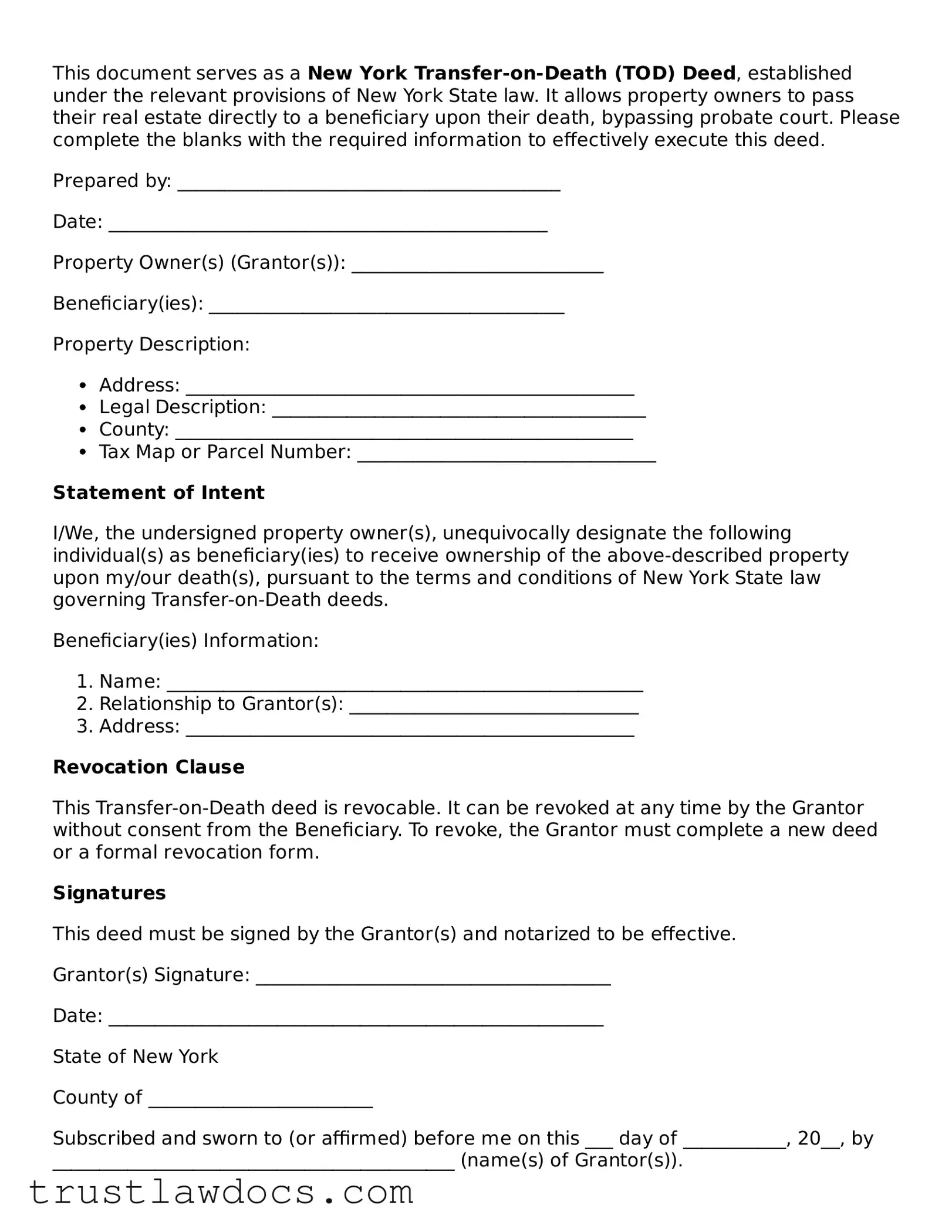This document serves as a New York Transfer-on-Death (TOD) Deed, established under the relevant provisions of New York State law. It allows property owners to pass their real estate directly to a beneficiary upon their death, bypassing probate court. Please complete the blanks with the required information to effectively execute this deed.
Prepared by: _________________________________________
Date: _______________________________________________
Property Owner(s) (Grantor(s)): ___________________________
Beneficiary(ies): ______________________________________
Property Description:
- Address: ________________________________________________
- Legal Description: ________________________________________
- County: _________________________________________________
- Tax Map or Parcel Number: ________________________________
Statement of Intent
I/We, the undersigned property owner(s), unequivocally designate the following individual(s) as beneficiary(ies) to receive ownership of the above-described property upon my/our death(s), pursuant to the terms and conditions of New York State law governing Transfer-on-Death deeds.
Beneficiary(ies) Information:
- Name: ___________________________________________________
- Relationship to Grantor(s): _______________________________
- Address: ________________________________________________
Revocation Clause
This Transfer-on-Death deed is revocable. It can be revoked at any time by the Grantor without consent from the Beneficiary. To revoke, the Grantor must complete a new deed or a formal revocation form.
Signatures
This deed must be signed by the Grantor(s) and notarized to be effective.
Grantor(s) Signature: ______________________________________
Date: _____________________________________________________
State of New York
County of ________________________
Subscribed and sworn to (or affirmed) before me on this ___ day of ___________, 20__, by ___________________________________________ (name(s) of Grantor(s)).
Notary Public: ________________________________
My Commission Expires: ________________________
Instructions for Recording
After completing and notarizing this deed, you must file it with the county recorder's office where the property is located. Ensure all information is accurate and legible to avoid any delays in the recording process.
